The origins of Aztec mythology have long puzzled scholars and captivated the imagination of those who delve into the mysteries of ancient civilizations. From the birth of the universe to the gods of war and sacrifice, the Aztecs crafted a complex belief system that intertwined with their daily lives and rituals. In this article, we will embark on a journey through time, exploring the mythological tales, deities, and rituals that shaped the Aztec culture. Brace yourself for a dive into the enigmatic world of the Aztecs, where gods ruled, sacrifices were made, and the foundations of an empire were laid.
Contents
- The Birth of the Universe
- The Ancient Dieties of Aztec Mythology
- Mythical Tales and Rituals of War and Sacrifice
- The Influence of Aztec Mythology in Daily Life
- Modern Perspectives on Aztec Mythology
- Conclusion
-
Frequently Asked Questions
- 1. Where did the Aztecs believe the universe originated?
- 2. Who were Nanahuatzin and Tecciztecatl in Aztec mythology?
- 3. What is the significance of the birth of the sun and the moon?
- 4. How were the gods involved in the creation of the universe?
- 5. How did the Aztecs view the concept of time?
- 6. Were there any challenges or obstacles in the birth of the new sun and moon?
- 7. What role does the birth of the universe play in Aztec rituals and ceremonies?
- 8. Are there any other creation stories in Aztec mythology?
- 9. How did the Aztecs honor the sun and the moon in daily life?
- 10. What can we learn from the birth of the universe in Aztec mythology?
- References
-
Frequently Asked Questions
- 1. What is the significance of Aztec mythology in the Birth of the Universe?
- 2. Who were the main deities in Aztec mythology?
- 3. What role did sacrifice play in Aztec mythology?
- 4. How did the Aztecs view the underworld and its rulers?
- 5. What is the significance of Huitzilopochtli in Aztec mythology?
- 6. Who was Quetzalcoatl and what were his attributes?
- 7. What rituals and myths are associated with war and sacrifice in Aztec mythology?
- 8. How did Aztec mythology influence daily life in Aztec society?
- 9. How has Aztec mythology been interpreted in modern perspectives?
- 10. What can we learn from studying Aztec mythology?
- References
- Read More
The Birth of the Universe
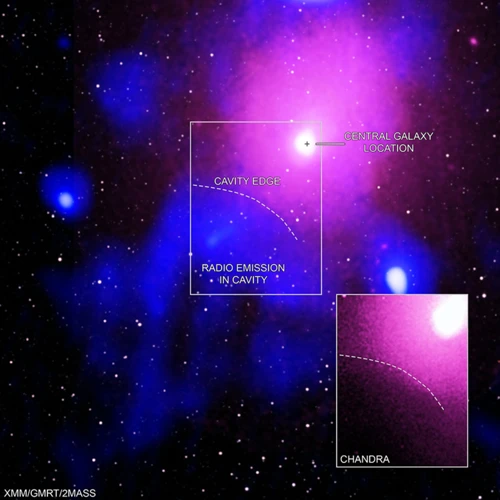
In the realm of Aztec mythology, the birth of the universe is a captivating tale filled with cosmic forces and divine beings. According to Aztec beliefs, the universe underwent four cycles of creation and destruction, each associated with a specific sun. The first cycle, known as “Four Ocelot” or “Four Jaguar,” was consumed by jaguars, signaling the end of an era. It was followed by the second cycle, “Four Wind,” where the world was ravaged by fierce winds and colossal hurricanes. The third cycle, “Four Rain,” brought devastating floods that swept across the land.
But it was in the fourth cycle, “Four Earthquake,” that the universe finally found stability. In this era, the gods convened at Teotihuacan, the sacred city, to discuss the creation of a new sun. Two gods, Nanahuatzin and Tecciztecatl, offered themselves as sacrifices to become the new sun and the moon, respectively. Their ascent to the heavens was met with challenges and obstacles, but ultimately resulted in their transformation into celestial bodies.
This cosmic event marked the birth of the current sun, known as Tonatiuh, which continues to illuminate our world to this day. In Aztec mythology, the birth of the universe is not simply a scientific phenomenon but a sacred and intricate tapestry woven by the gods themselves. It illustrates the cyclical nature of creation and destruction, emphasizing the power and influence of the divine realm in shaping their cosmology.
To delve deeper into the symbolic meanings embedded within this creation story, explore the hidden meanings of Greek myth symbols, which share fascinating parallels with Aztec mythology in their exploration of universal truths and archetypal motifs. Understanding the birth of the universe is crucial to comprehending the foundation upon which the rich tapestry of Aztec mythology was woven.
The Ancient Dieties of Aztec Mythology
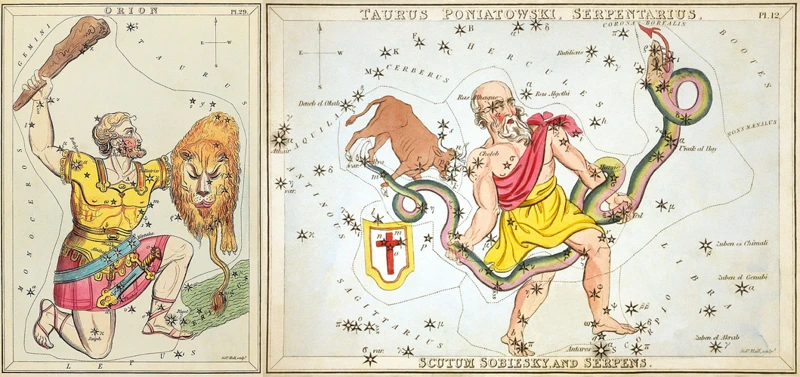
The ancient deities of Aztec mythology were a diverse pantheon of gods and goddesses who held great significance in the Aztec culture. One prominent deity was Huitzilopochtli, the fierce and powerful sun and war god, who was often depicted with a hummingbird helmet and serpent-adorned spear. Another revered deity was Quetzalcoatl, the feathered serpent god associated with creation, knowledge, and the wind. Known for his duality, Tezcatlipoca was the god of night and sorcery, embodying both the creative and destructive forces of the universe. Mictlantecuhtli and Mictecacihuatl ruled over the underworld, guiding souls in their journey after death. Tlaloc, the rain god, was worshipped for his ability to provide sustenance through water and fertility. And Xochiquetzal, the goddess of beauty and fertility, was honored for her role in preserving love and procreation. These deities, with their unique characteristics and powers, played vital roles in the Aztec belief system and rituals, shaping the spiritual and cultural identity of the civilization. To understand the influence of Aztec mythology and the importance of these deities in the lives of the Aztecs, it is crucial to recognize the role of networking in career success and the impact of interpersonal connections on the paths of individuals within the larger societal framework. Exploring Aztec mythology reveals the intricate interplay between spirituality, power dynamics, and the aspirations of individuals in a complex civilization.
Huitzilopochtli: The Sun and War God
Huitzilopochtli, the revered deity in Aztec mythology, held dual roles as the Sun and War God, symbolizing the powerful forces of light and conflict. According to legend, Huitzilopochtli was born from the womb of his mother, Coatlicue, who became impregnated by a ball of feathers. This immaculate conception represented the celestial origins of this formidable deity.
As the Sun God, Huitzilopochtli was responsible for providing light and warmth to the world. He journeyed across the sky each day, defeating the darkness and ensuring the continuity of life on Earth. The Aztecs believed that Huitzilopochtli’s presence in the heavens nourished their crops and brought prosperity to their civilization.
However, Huitzilopochtli’s role as the God of War was equally significant. The Aztecs believed that in order for the sun to rise each morning, Huitzilopochtli had to engage in an eternal battle against the darkness. He was their fierce protector, leading them to victory in battles and safeguarding their empire from enemies. Warriors prayed to Huitzilopochtli and made offerings to ensure his favor and guidance in their military endeavors.
In artistic depictions, Huitzilopochtli is often portrayed as a warrior adorned in vibrant feathers, wielding a serpent-shaped weapon known as a xiuhcoatl. Feathers held great symbolic significance in Aztec culture, representing divine energy and power.
To learn more about the fascinating explorations and discoveries of pioneers during the Age of Exploration, delve into the captivating narratives of those who ventured into uncharted territories, shaping the course of history. Discover the extraordinary tales of exploration and resilience in the face of the unknown by following the link to age-of-exploration-pioneers-discoveries. Explorers like these embodied the courage and determination that mirrored the attributes of Huitzilopochtli, the Sun and War God of Aztec mythology.
Quetzalcoatl: The Feathered Serpent
In Aztec mythology, Quetzalcoatl stands as one of the most revered deities, known as the Feathered Serpent. Quetzalcoatl was believed to be the god of wisdom, knowledge, and creativity, as well as the bringer of civilization. He was often depicted as a snake with vibrant feathers, symbolizing the harmonious blend of earth and sky, material and spiritual. Quetzalcoatl played a crucial role in shaping Aztec culture, introducing various arts, agriculture, and even the calendar system.
According to myth, Quetzalcoatl was one of the gods who helped create humanity by offering their own blood to bring life to the bones of the deceased. This act of sacrifice demonstrates Quetzalcoatl’s benevolence and connection to humanity. However, his story is not without its own moments of tragedy. Legend tells of Quetzalcoatl’s downfall, when his brother, Tezcatlipoca, deceived him into committing inappropriate actions that brought about his exile.
Despite his fall from grace, Quetzalcoatl continued to be held in high esteem by the Aztecs, who eagerly anticipated his prophesized return. In fact, it is said that the Spanish conquistador, Hernán Cortés, was believed by some Aztecs to be the reincarnation of Quetzalcoatl, leading to complex interactions between the two cultures during the Aztec empire’s Spanish conquest.
Quetzalcoatl’s multifaceted nature as both a nurturing and transformative figure reflects the complex worldview of the Aztecs, where the divine strongly influenced all aspects of life. From art to agriculture, Quetzalcoatl’s impact can still be seen in the intricate murals, temples, and vibrant feathered regalia that continue to captivate and inspire awe to this day. The legacy of Quetzalcoatl serves as a testament to the profound influence of mythology on the development and identity of ancient civilizations.
Tezcatlipoca: The God of Night and Sorcery
Tezcatlipoca, the enigmatic and multifaceted god of night and sorcery, held a prominent place in Aztec mythology. Often depicted with a missing foot, symbolizing his ability to traverse different realms, Tezcatlipoca was revered as a powerful and unpredictable deity. His name translates to “Smoking Mirror,” representing his association with obsidian mirrors that were believed to hold mystical and prophetic qualities.
Tezcatlipoca played a crucial role in Aztec cosmology, embodying both creation and destruction. He was associated with the nocturnal sky, serving as the counterbalance to his brother Quetzalcoatl, the god of light and order. As the god of sorcery, Tezcatlipoca was revered for his ability to shape-shift and manipulate reality. He was often invoked by sorcerers and priests seeking his assistance in divination, spells, and dark magic.
The worship of Tezcatlipoca was intrinsically linked to Aztec society, particularly in the context of leadership and rulership. He embodied the duality of power, representing both the force that could grant glory and the force that could bring downfall. As the patron god of the powerful and ambitious, Tezcatlipoca bestowed authority upon the rulers and demanded their loyalty and allegiance.
In Aztec rituals and ceremonies, Tezcatlipoca was honored through offerings and sacrifices. These rituals were intended to ensure the favor of the god and maintain the delicate balance between order and chaos. The priests would make offerings of precious stones, feathers, and even human blood in homage to Tezcatlipoca, hoping to appease his unpredictable nature and secure his blessings.
To gain a deeper understanding of the intricate world of Aztec gods and their symbolism, it is fascinating to explore the hidden meanings of Greek myth symbols. While Aztec mythology holds its unique characteristics, there are often universal themes and archetypal motifs shared among ancient mythologies. Tezcatlipoca, with his mystical powers and role as the god of night and sorcery, remains a captivating figure in Aztec mythology, embodying the enigmatic and mysterious nature of the cosmos.
Mictlantecuhtli and Mictecacihuatl: Rulers of the Underworld
Mictlantecuhtli and Mictecacihuatl, known as the rulers of the underworld, held a significant place in Aztec mythology, overseeing the realm of the dead. As the male and female deities of death, they governed Mictlan, the afterlife destination of souls. Mictlantecuhtli, often depicted as a skeletal figure adorned with graveyard motifs, ruled over the spirits of the deceased. Mictecacihuatl, his female counterpart, was depicted similarly and shared his dominion.
In Aztec beliefs, death was seen as an integral part of life, and Mictlantecuhtli and Mictecacihuatl played a crucial role in this cycle. Their domain was divided into multiple levels, each with its own challenges for the souls passing through. Souls had to overcome various obstacles, such as a treacherous river, before reaching their final resting place. The Aztecs believed that Mictlantecuhtli and Mictecacihuatl would care for the souls and provide them shelter in the afterlife.
To honor these powerful underworld deities, the Aztecs held annual ceremonies known as Miccailhuitontli, during which they celebrated and remembered their deceased ancestors. These rituals involved offerings, dances, and prayers to ensure the safe passage and well-being of the souls. Mictlantecuhtli and Mictecacihuatl were revered and feared simultaneously, as they held the power to grant or deny access to the afterlife.
The imagery associated with Mictlantecuhtli and Mictecacihuatl often incorporated bones, skulls, and skeletal motifs, reflecting the underworld’s macabre nature. The Aztecs believed that the gods resided deep within the earth, surrounded by darkness and decay. This portrayal highlights the duality of life and death in Aztec mythology, where the cycle of creation and destruction was embraced and celebrated.
The role of Mictlantecuhtli and Mictecacihuatl as the rulers of the underworld showcases the Aztecs’ profound understanding of the complexity of existence. They recognized that the balance between life and death was vital for the eternal flow of energy and the continuity of the universe. By honoring and seeking the favor of these underworld deities, the Aztecs hoped for a smooth transition into the afterlife for themselves and their loved ones.
Tlaloc: The Rain God
Tlaloc, the Rain God, held a crucial role in Aztec mythology and played a pivotal role in their agricultural practices and beliefs. Depicted as a fearsome deity with fangs and reptilian characteristics, Tlaloc was associated with the replenishment of water sources and the fertility of the earth. Aztec farmers looked to Tlaloc with reverence and sought his favor to ensure bountiful harvests.
Tlaloc was believed to reside in the highest mountain peaks, overseeing the clouds and rain. The Aztecs believed that he controlled the water cycle, sending rain to nourish the land. In times of drought or excessive rainfall, people turned to Tlaloc, offering prayers and sacrifices to appease his wrath or seek his mercy.
Devotees honored Tlaloc through elaborate rituals and ceremonies. The most significant of these was the Rain Ceremony, performed by priests and attended by the community. Participants adorned themselves with feathers and flowers, appealing to Tlaloc’s aesthetic preferences. Chants, dances, and offerings were made, including edible corn cakes shaped like Tlaloc’s face, known as “tlilacaztli.”
The Rain Ceremony was performed during specific times of the year, aligned with the agricultural calendar. Successive failures or successes of the harvest were attributed to Tlaloc’s favor or displeasure, reinforcing his importance in the Aztec civilization.
Tlaloc’s domain extended beyond agriculture, as he was also associated with the mystical and divine powers of water. He was often depicted alongside snakes, symbolizing his control over the earth’s veins, and his presence was believed to be felt in underground springs, caves, and mountain lakes.
In addition to his role in sustaining life, Tlaloc had a darker aspect associated with his water-related powers. He was also considered a god of storms and lightning, bringing destructive forces alongside the life-giving rains. This duality exemplified the complexities of Aztec mythology, where gods and their attributes often encompassed both positive and negative aspects.
Tlaloc’s influence extended beyond earthly realms, as he was also revered in the realm of the dead. Aztecs believed that those who died from diseases related to water, such as drowning or illnesses caused by excessive rain, would be under Tlaloc’s protection in the afterlife.
Through his depiction as a powerful and awe-inspiring deity, Tlaloc served as a reminder of the interconnectedness between humans, nature, and the divine. His role as the Rain God highlighted the Aztecs’ dependence on a balanced ecosystem and their acknowledgment of the forces of nature that shaped their existence.
Xochiquetzal: The Goddess of Beauty and Fertility
Xochiquetzal, the vibrant goddess of beauty and fertility, held a prominent place in Aztec mythology. She personified the essence of feminine grace, love, and sensuality. Associated with flowers, weaving, and the arts, Xochiquetzal symbolized the blossoming of nature and the cyclical renewal of life.
According to Aztec beliefs, Xochiquetzal played a vital role in ensuring the prosperity of humanity. It was believed that she bestowed her blessings upon couples, granting them fertility and guiding them in matters of love and relationships. As the patroness of artisans and craftspeople, she inspired the creation of exquisite jewelry and fine fabrics, celebrating beauty and creativity.
Xochiquetzal’s significance extended beyond the mortal realm and into the divine. She was revered by the gods themselves, with her beauty and allure captivating their hearts. Many tales depicted her as a desired companion, sought after by gods and mortals alike. However, she remained faithful to her husband, Tlaloc, the rain god.
Worshipers honored Xochiquetzal with elaborate ceremonies and rituals. Offerings of flowers, feathers, and precious ornaments were presented at her shrines, expressing gratitude for her divine blessings. These rituals often accompanied celebrations and festivals, where music, dance, and poetry were dedicated to her.
Despite her associations with beauty and fertility, Xochiquetzal possessed a multifaceted nature. She was also recognized as a symbol of female power and strength. As the protectress of women and childbirth, she provided guidance and support during the birthing process.
Today, the legacy of Xochiquetzal continues to inspire artists, feminists, and those who celebrate femininity and fertility. Her presence is not limited to ancient mythology but remains embedded in the cultural fabric of modern society. The goddess invites us to embrace our own inner beauty, creativity, and feminine energy, reminding us of the timeless power of the divine feminine.
For more insights into the mythological world, explore the hidden meanings of Greek myth symbols, which offer parallels and insights into the universal aspects of the divine feminine. Xochiquetzal’s story serves as a reminder of the profound connections between beauty, fertility, and the eternal cycles that shape our existence.
Mythical Tales and Rituals of War and Sacrifice
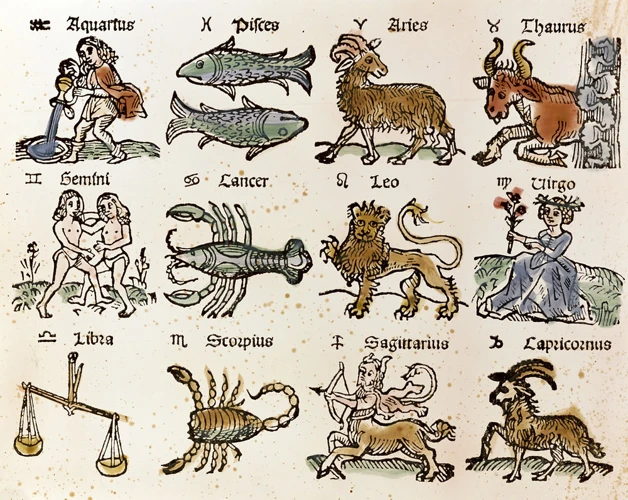
Mythical tales and rituals of war and sacrifice held a significant place within the realm of Aztec mythology. One of the prominent tales is the legend of the Five Suns, which depicts a cycle of creation and destruction that set the stage for the birth of the current era. The Aztecs believed that the world had undergone four previous epochs, each ending in cataclysmic events. The fifth and current epoch was believed to be in constant peril, requiring continuous sacrifices to appease the gods and maintain the cosmic balance. These rituals of war and sacrifice were deeply ingrained in Aztec society, serving as acts of devotion and means to ensure prosperity and protection. Warriors played a vital role in these rituals, as they believed that engaging in battle and capturing prisoners would provide the necessary nourishment for the sun to rise each day. These tales and rituals shed light on the complex interplay between mythology, warfare, and sacrifice in Aztec culture, underscoring the centrality of these practices in their spiritual and social fabric.
Legend of the Five Suns
The Legend of the Five Suns is a significant myth within Aztec mythology, recounting the creation and destruction of different worlds or eras. According to the legend, each sun was associated with a particular cosmic force and had its own set of gods and elements. The First Sun, “Four Ocelot,” was ruled by the god Tezcatlipoca and ended in devastation when it was devoured by jaguars.
The Second Sun, “Four Wind,” was governed by the god Quetzalcoatl and brought forth fierce winds that tore through the world. The Third Sun, “Four Rain,” was under the rulership of the god Tlaloc and ended in a cataclysmic deluge that flooded the entire earth. These first three suns were characterized by destruction and chaos.
The Fourth Sun, “Four Earthquake,” was governed by the god Tlaltecuhtli. This era is closely tied to the creation of humanity, as it is believed that the gods Quetzalcoatl and Tezcatlipoca created the first human beings from maize dough. However, the Fourth Sun ultimately met its demise through earthquakes that caused massive upheavals in the world.
The current era is known as the Fifth Sun, or “Four Movement.” This era is symbolized by the sun god Tonatiuh, who provides light and energy to the world. According to the Aztecs, the Fifth Sun is believed to be the last era, and it will end with a catastrophic event that may take various forms, such as natural disasters or the return of the gods.
The Legend of the Five Suns serves as a reminder of the cyclical nature of life and the impermanence of existence. It highlights the belief that each era presents different challenges and fates, but also provides opportunities for growth and renewal. The myth also emphasizes the role of the gods in shaping the destiny of humanity and the world.
To gain a deeper understanding of the role of mythology and storytelling in different cultures, it is worth exploring the hidden meanings of Greek myth symbols. By examining various mythologies and their legends, we can unravel the intricate tapestry of human beliefs, perceptions, and aspirations throughout history.
The Role of Sacrifice in Aztec Mythology
The role of sacrifice in Aztec mythology is a complex and deeply ingrained aspect of their religious practices. Sacrifice was seen as a means of nourishing and appeasing the gods, ensuring the continued balance and order of the universe. The Aztecs believed that the gods themselves had sacrificed to bring about the creation of the world, and thus human sacrifice was considered a sacred duty.
Human sacrifices were typically performed during elaborate rituals and ceremonies, often involving the cutting out of the heart as an offering to the gods. These rituals were carried out by priests and involved meticulous preparations, including fasting, purification, and the adornment of ceremonial attire. It was believed that the sacrifice of a human life would provide the gods with strength and vitality, allowing them to sustain the world and secure favorable outcomes for the Aztec people.
Sacrifices were not limited to humans alone. Animals, such as jaguars, eagles, and snakes, were also offered in rituals as substitutes for human beings. Each sacrifice was accompanied by intricate symbolism and carried out with great reverence. It was believed that the manner in which the sacrifice occurred, the specific deity being honored, and the individual’s role in society all played a significant role in determining the outcome of the ritual.
The Aztecs firmly believed that without the regular practice of sacrifice, the world would be plunged into chaos and disaster. It was their solemn duty to offer these sacrifices to maintain the delicate equilibrium between the earthly realm and the divine. The role of sacrifice in Aztec mythology not only served as a means of communication with the gods but also reinforced the social and religious hierarchy of Aztec society.
To gain a deeper understanding of the intricate rituals surrounding sacrifice, it is essential to explore the role of networking in career success. Just as sacrifice played a vital role in the Aztec culture, networking serves as a foundation in modern society, facilitating connections and opportunities that can shape one’s professional trajectory. Understanding the role of sacrifice in Aztec mythology sheds light on the intricate belief systems and practices that governed their daily lives.
The Influence of Aztec Mythology in Daily Life
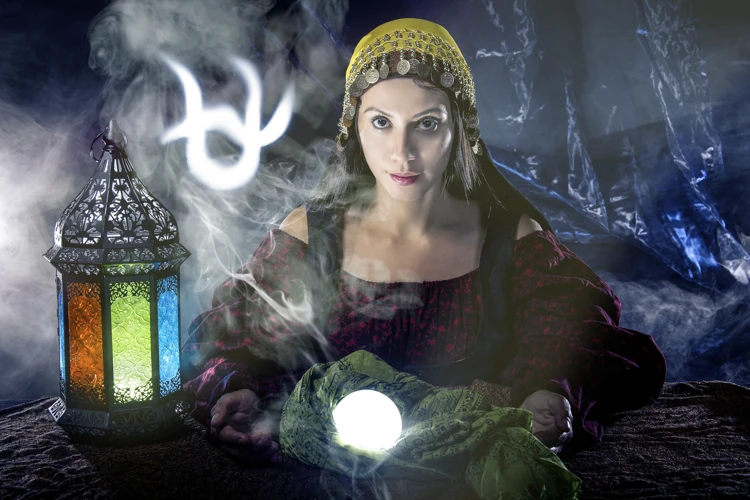
The influence of Aztec mythology was not limited to captivating stories and grand cosmic events; it permeated every aspect of daily life for the Aztec civilization. Aztec society was deeply rooted in religious beliefs and rituals, with the gods playing an integral role in guiding and shaping human existence. These beliefs were not confined to the realm of the abstract but manifested in tangible ways that impacted the lives of individuals and the community as a whole.
One such influence was the role of priests, who served as intermediaries between the people and the gods. They were responsible for conducting elaborate ceremonies, offering sacrifices, and deciphering divine messages. The importance of these rituals was so profound that the Aztec calendar was filled with religious festivals and sacred occasions, ensuring a constant engagement with the divine forces.
The Aztec pantheon of gods held specific domains that influenced different aspects of daily life. Tlaloc, the rain god, was revered for his power to bring fertility to the land, ensuring bountiful harvests and sustenance for the people. Farmers would offer prayers and sacrifices to Tlaloc, seeking his benevolence and protection of their crops. Xochiquetzal, the goddess of beauty and fertility, held sway over matters of love, marriage, and childbirth. People would offer prayers, adorn themselves with flowers, and seek her blessings for harmonious relationships and healthy offspring.
The Aztecs also believed that human actions and behavior had consequences in the divine realm. It was believed that the gods constantly observed their actions, and individual choices had far-reaching implications. For instance, bravery in war and sacrifice was highly esteemed, as it was believed to honor the gods and ensure the continued harmony of the universe. Warriors who demonstrated valor on the battlefield were not only celebrated in society but embraced the belief that they would join the gods in the afterlife.
Aztec mythology influenced the social structure as well, with the power dynamics of the empire mirroring the hierarchy of the gods. The ruler, known as the tlatoani, was considered a divine representative on Earth, and his authority was derived from the gods themselves. This gave the ruler immense political and religious power, as he was seen as a conduit between the mortal realm and the divine realm.
Aztec mythology was far from being an abstract belief system; it intricately intertwined with the everyday lives of the Aztecs. It played a role in the agricultural practices, the pursuit of love and fertility, the ideals of bravery and sacrifice, and the very foundations of social and political structures. The influence of Aztec mythology pervaded every facet of Aztec society and shaped their understanding of their place in the universe.
Modern Perspectives on Aztec Mythology
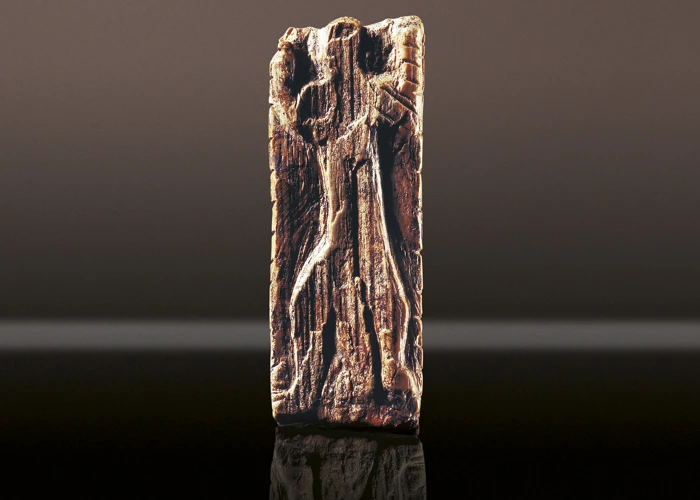
Modern perspectives on Aztec mythology offer a fascinating insight into how this ancient belief system continues to captivate and inspire contemporary thinkers and artists. In recent years, scholars and enthusiasts alike have delved deeper into the symbolism, cultural significance, and psychological interpretations of Aztec mythological tales.
One prominent aspect of modern perspectives is the recognition of the complexity and ambiguity present in Aztec mythology. Scholars now acknowledge that the gods and their stories represented more than mere religious entities – they embodied human emotions, natural phenomena, and societal dynamics. This nuanced understanding allows for a deeper appreciation of the depth and intricacy of Aztec cosmology.
Another modern perspective on Aztec mythology involves examining the ethical implications of Aztec rituals, particularly the practice of human sacrifice. Previously seen as solely barbaric, some scholars argue that these rituals were part of a larger ceremonial framework aimed at maintaining cosmic balance and appeasing the gods. This viewpoint challenges the simplistic view of Aztecs as bloodthirsty savages and prompts a reevaluation of the cultural context in which these practices occurred.
Modern interpretations of Aztec mythology have expanded beyond academic discourse and ventured into popular culture. Art, literature, and film have infused Aztec themes into their narratives, drawing inspiration from its rich tapestry of gods and legendary tales. This resurgence in popular interest not only introduces the mythology to new audiences but also fosters a sense of pride and connection to the ancient Aztec heritage.
Modern perspectives on Aztec mythology highlight its enduring relevance and impact on various aspects of human society. By exploring its intricate symbolism, ethical complexities, and artistic representations, we gain a deeper appreciation of the cultural legacy left behind by the Aztecs. As we continue to explore and interpret these ancient mythological tales, we embark on a journey that enables us to connect with the profound wisdom and spiritual insights of this enigmatic civilization.
Conclusion
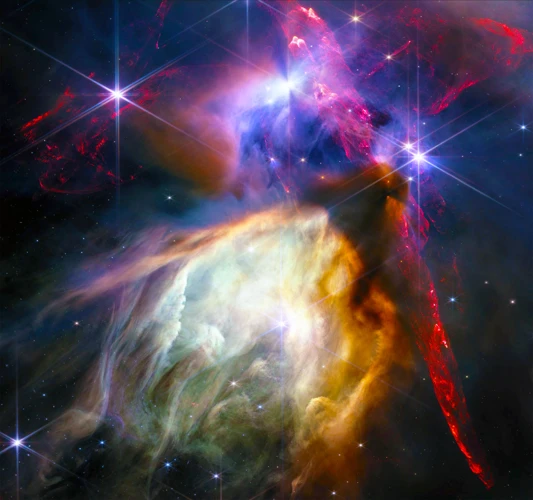
In conclusion, the realms of Aztec mythology offer a captivating glimpse into the beliefs and rituals of this ancient civilization. From the birth of the universe to the gods of war and sacrifice, Aztec mythology demonstrates a complex interweaving of cosmic forces, deities, and human existence. The creation story of the universe reveals the cyclical nature of life and sets the stage for the intricate web of mythological tales and rituals that shaped Aztec culture.
The gods of Aztec mythology, such as Huitzilopochtli, Quetzalcoatl, and Tezcatlipoca, personify different aspects of nature, warfare, and the human experience. Each deity carries symbolic significance and often demands reverence through rituals and sacrifices. These acts of devotion were believed to maintain cosmic harmony and ensure the well-being of the Aztec civilization.
Furthermore, Aztec mythology is not confined to ancient texts and beliefs but has a lasting influence on the daily lives of the Aztecs. From agricultural practices to architecture and art, the influence of mythology can be seen in various aspects of their society. The Aztecs incorporated mythological symbolism and rituals into their daily routines, reinforcing their connection to the divine and the natural world.
While the Aztec civilization came to an end with the arrival of the Spanish conquistadors, the legacy of Aztec mythology continues to captivate and inspire people today. Modern perspectives on Aztec mythology offer fresh interpretations and insights into this ancient belief system. Scholars and enthusiasts continue to explore the depths of Aztec mythology, shedding new light on its profound significance and cultural impact.
In conclusion, the mysterious origins of Aztec mythology provide a window into a captivating world where gods governed and rituals shaped daily life. From the birth of the universe to the involvement of mythical deities in warfare and sacrifice, Aztec mythology is a tapestry of cosmic forces and human existence. Regardless of how much time has passed, the influence of Aztec mythology continues to enchant and intrigue, inviting us to dive into the enigmatic world of the Aztecs and unravel the secrets of their beliefs and rituals.
Frequently Asked Questions
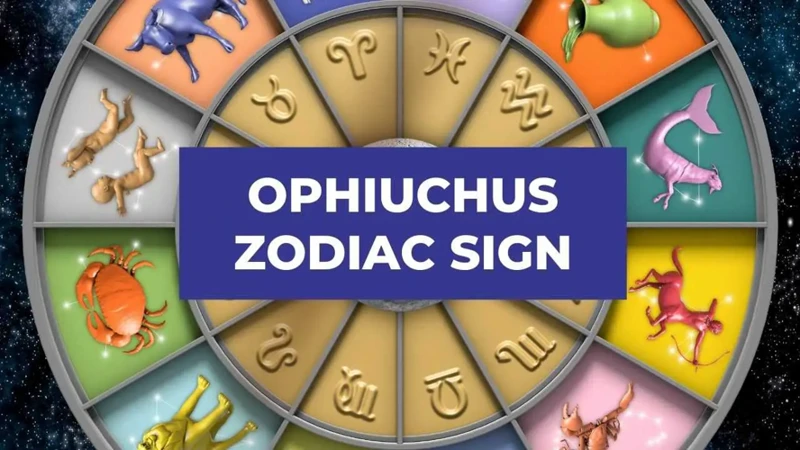
1. Where did the Aztecs believe the universe originated?
The Aztecs believed that the universe originated through a series of cosmic cycles, with each cycle bringing forth a new era and a new sun.
2. Who were Nanahuatzin and Tecciztecatl in Aztec mythology?
Nanahuatzin and Tecciztecatl were two Aztec gods who volunteered to become sacrifices for the creation of the new sun and the moon during the fourth cycle of the universe.
3. What is the significance of the birth of the sun and the moon?
The birth of the sun and the moon symbolizes the establishment of order and stability in the universe, marking the beginning of the current cycle and providing light and guidance to humanity.
4. How were the gods involved in the creation of the universe?
The gods played a crucial role in the creation of the universe by convening and deciding on the sacrifice of Nanahuatzin and Tecciztecatl to become the new sun and the moon, respectively.
5. How did the Aztecs view the concept of time?
The Aztecs believed that time was cyclical, consisting of periods of creation, destruction, and rebirth, with each cycle having its own sun and unique challenges.
6. Were there any challenges or obstacles in the birth of the new sun and moon?
Yes, the birth of the new sun and moon faced challenges, including the gods’ skepticism and disagreements, as well as the immense heat that Nanahuatzin endured during his ascent to the heavens.
7. What role does the birth of the universe play in Aztec rituals and ceremonies?
The birth of the universe is a foundational aspect of Aztec rituals and ceremonies, as it provides the framework for understanding the cosmic forces, cycles, and the intricate relationship between the gods and humanity.
8. Are there any other creation stories in Aztec mythology?
Yes, besides the creation story associated with the birth of the universe, the Aztecs also had other myths and legends that explained the origins of different aspects of their world, such as the creation of humanity and the birth of various gods.
9. How did the Aztecs honor the sun and the moon in daily life?
The Aztecs revered the sun and the moon as powerful deities and incorporated their worship into various aspects of their daily life, including rituals, festivals, and the construction of monumental structures aligned with celestial bodies.
10. What can we learn from the birth of the universe in Aztec mythology?
The birth of the universe in Aztec mythology teaches us about the Aztecs’ deep connection with nature, their emphasis on cycles and balance, and their belief in the interplay between the human and divine realms.
References
- Captivating Aztec Myths of Gods, Goddesses, and …
- Sacrifice and Destruction: The Apocalyptic Aztec Creation …
- Aztec religion | Practices, Beliefs, & gods
Frequently Asked Questions

1. What is the significance of Aztec mythology in the Birth of the Universe?
Aztec mythology offers a unique insight into the creation of the universe according to Aztec beliefs. It portrays a dynamic and ever-evolving universe, shaped by the actions of divine beings such as Ometeotl and their offspring.
2. Who were the main deities in Aztec mythology?
The deities of Aztec mythology were diverse and numerous. Some of the major gods include Huitzilopochtli, the sun and war god, Quetzalcoatl, the feathered serpent, Tezcatlipoca, the god of night and sorcery, and Tlaloc, the rain god.
3. What role did sacrifice play in Aztec mythology?
Sacrifice was a central aspect of Aztec mythology and religious practices. It was believed that through the offering of human blood, the gods would be appeased and the continuation of the world ensured. Sacrifice was often associated with agricultural cycles and cosmic balance.
4. How did the Aztecs view the underworld and its rulers?
The Aztecs believed in the existence of an intricate underworld known as Mictlán. It was ruled by Mictlantecuhtli and Mictecacihuatl, who presided over the souls of the deceased. The journey through Mictlán was seen as a challenging and transformative experience for the soul.
5. What is the significance of Huitzilopochtli in Aztec mythology?
Huitzilopochtli was one of the most important gods in Aztec mythology. He was both the sun god and the god of war. The Aztecs believed that Huitzilopochtli guided them in their migrations and protected them in battle. He was widely revered and worshipped in Aztec society.
6. Who was Quetzalcoatl and what were his attributes?
Quetzalcoatl was a prominent deity in Aztec mythology, often depicted as a feathered serpent. He was associated with wisdom, knowledge, fertility, and creation. Quetzalcoatl was also believed to have introduced various aspects of civilization, such as agriculture and the calendar, to humanity.
7. What rituals and myths are associated with war and sacrifice in Aztec mythology?
Aztec mythology is rich in mythical tales and rituals related to war and sacrifice. One notable myth is the Legend of the Five Suns, which narrates the cycles of creation and destruction. Rituals of war and sacrifice were performed to honor the gods and maintain cosmic harmony.
8. How did Aztec mythology influence daily life in Aztec society?
Aztec mythology played a significant role in shaping daily life in Aztec society. It influenced various aspects, such as agricultural practices, the calendar system, and social hierarchy. The gods were seen as active participants in human affairs, and their worship was deeply integrated into daily routines.
9. How has Aztec mythology been interpreted in modern perspectives?
Modern perspectives on Aztec mythology vary greatly. While some approach it as a rich cultural and historical tradition, others critique its violent aspects. Researchers continue to explore and interpret Aztec mythology from various angles, shedding light on its complexity and cultural significance.
10. What can we learn from studying Aztec mythology?
Studying Aztec mythology provides valuable insights into the worldview, beliefs, and rituals of the Aztec civilization. It allows us to understand the profound connection between the natural world, gods, and human existence. It highlights the diversity and complexity of ancient mythologies.






